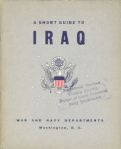 Awhile back I blogged about the war in Afghanistan and international law. It’s a very big but useful leap to move from a thorough and scholarly study of the ins and outs of the rules of war or the legality of border crossings to Afghanistan: Alone & Unafraid. This beautiful coffee table book of photographs from the U.S. Marine Corps transports you from the scholar’s study directly to the landscape and people of that starkly beautiful and troubled country. The photographer, Lieutenant Colonel David A Benhoff, is a Marine Corps field historian who used his personal Camera to capture these striking images.
Awhile back I blogged about the war in Afghanistan and international law. It’s a very big but useful leap to move from a thorough and scholarly study of the ins and outs of the rules of war or the legality of border crossings to Afghanistan: Alone & Unafraid. This beautiful coffee table book of photographs from the U.S. Marine Corps transports you from the scholar’s study directly to the landscape and people of that starkly beautiful and troubled country. The photographer, Lieutenant Colonel David A Benhoff, is a Marine Corps field historian who used his personal Camera to capture these striking images.
The first part of the book consists of photos shot in the countryside, using both color and black and white images to bring to life the mountains and plains, but above all the faces – faces of bearded men, women in head scarves, and smiling children – lots of children. Whether they smile or not, their direct and open gazes highlight the way in which these people view Colonel Benhoff, the American presence, and the world.
The second part of the book switches to the Afghan National Army, or ANA. Here, the images are more of men in the process of learning the arts of modern Western warfare than of green troops in basic training. As one marine sergeant comments, “These guys have been fighting forever….I’m not gonna teach him how to fight.”
I won’t go on an on about Afghanistan: Alone & Unafraid. The real impact of this finely produced book comes from the images, for which the front cover will have to suffice (see above). You don’t have to be an expert on Afghanistan or its troubles to be impressed by the photos, but their very vividness does bring home the continuing travails of an ancient land and its peoples, caught in the web of current international politics and crises. You can get a copy here or find it in a library.



 Posted by govbooktalk
Posted by govbooktalk 



